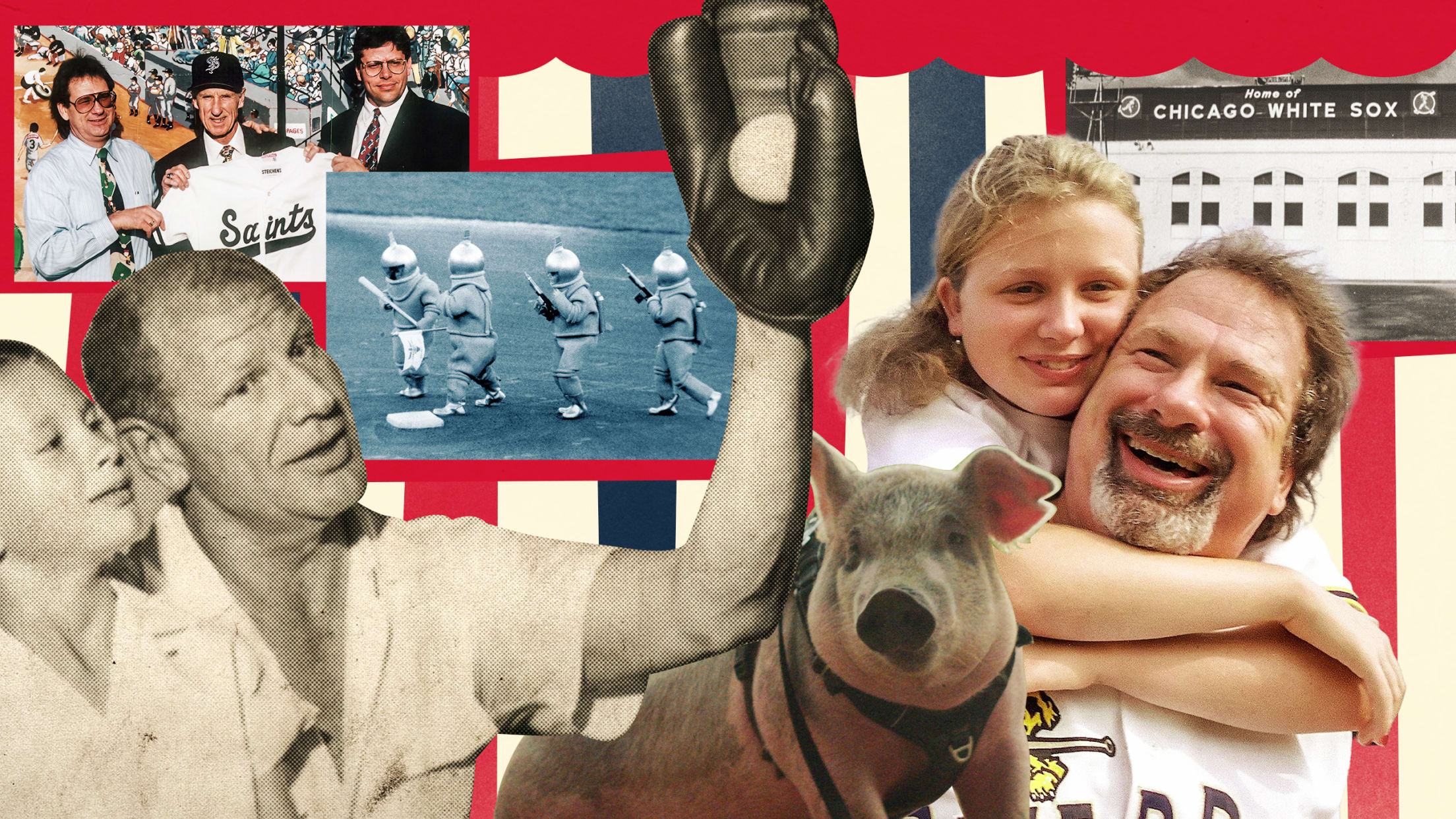
A timeline of the Veeck family's zany imprint on baseball

If you've ever enjoyed a modern ballgame, you should thank a Veeck. Whether you dig the new pitch clock, the ivy on Wrigley's famed outfield walls, or the kind of wacky ballpark promotions that thrive in Major and Minor League parks around the country, it was likely the brainchild of Hall of Fame owner Bill Veeck or his son Mike.
• Watch 'The Saint of Second Chances,' now streaming on Netflix
That's right: This one baseball family could be considered the true forefathers of the modern game. Whether it was ideas a little too early for their time -- Veeck's Pitchometer was actually never used in a game, though it did make an appearance on the Comiskey Park scoreboard -- or simply too out there to ever really catch on (Ballplayers in shorts? A pig as a batboy??), the Veecks were never scared of trying something new in an attempt to put a smile on the fans' faces.
“We can’t always guarantee the ballgame will be good,” Bill Veeck said. “But we can guarantee the fan will have fun.”
With the release of Netflix's documentary "The Saint of Second Chances" about Mike Veeck out today, let's run through the timeline of the Veeck family legacy.
Feb. 9, 1914: Here's where it all begins as William Louis Veeck Jr., better known as Bill, is born in Chicago. His father, William Sr., was a local sportswriter who would later become president of the Chicago Cubs. While growing up, Bill would sell popcorn at Cubs games and was a concessions salesman at White Sox games.
1933: Following the death of his father, Bill becomes treasurer for the Cubs. He will take on a variety of roles with the Cubs over the years, doing everything the team may need, including slicing hot dog buns before games.
1937: You know the famed ivy that hangs on Wrigley Field's walls? You can thank Veeck for that. While there is debate on the issue -- some believe it was the Clavey family that planted it a month before Veeck claims to have come up with the idea -- we'll likely never know if perhaps Veeck was the originator of the idea.

1940: Teaming up with former Cubs star Charlie Grimm, Bill becomes an owner for the first time: He buys the Milwaukee Brewers -- then a Triple-A club in the the American Association.
November 1943: Bill enlists in the U.S. Marine Corps during World War II. He serves for nearly three years and sustains injuries to his right leg that require amputation above the knee.
Veeck even wrote a letter to the fans of the team announcing his goodbye and offering assurances that the good times wouldn't come to an end at the ballpark:
Dear Fans,
It's going to be kind of funny not to be around that ball yard this season because I have enjoyed so much being with you. However, you know that wherever I may be stationed, I will be looking forward to getting back to Borchert Field. I am not worried at all about leaving because I know we will have a good ball club and one that is ably managed both on the field and in the office. I know that you are going to keep having a good time at the ball games, and I hope you'll feel free to drop in and see the gang at the office just as you did while I was here.
1945: Veeck claims that he arrived in Milwaukee with just $11 in his pockets, but he left with a fair amount more: This year, Bill sells his stake in the Brewers, making a $275,000 profit.
June 22, 1946: Veeck buys the Cleveland Indians. While the club places last in the American League in attendance this year, his penchant for signing good ballplayers regardless of race and implementing fan-friendly promotions helps the team climb to first in attendance by 1948.
April 26, 1947: Veeck installs a portable outfield fence, able to be moved in or out depending on the opponent. At the end of the year, the AL makes a new rule that the outfield walls must have a fixed distance during the season.
July 5, 1947: Veeck signs Larry Doby, the first Black player in the American League, who makes his debut on this day.
Veeck also did something that other owners didn't: He honored the Negro Leagues contract, paying the Newark Eagles $10,000 for the rights to Doby's contract, with another $5,000 if he stayed up with the team for another month.
July 7, 1948: Veeck signs another Negro Leagues great, this time inking the legendary Satchel Paige to a contract. The difference here is that Paige is 42 years old, making him the league's oldest rookie. He pitches two seasons with the team, posting a 2.78 ERA in 155 2/3 innings.
Oct. 11, 1948: Cleveland wins the World Series under Veeck’s ownership, defeating the Boston Braves in six games. It's Cleveland's last World Series title to this day.
1949: After the team falls short of winning the pennant, Veeck holds a mock funeral in the outfield and buries the previous year's pennant. Later, after needing to liquidate assets following his divorce from his wife, Veeck sells the team.
He won't be out of baseball long.
April 29, 1950: Bill marries Mary Frances Ackerman, a publicist for the Ice Capades. Their marriage lasts 35 years, until his death.
March 5, 1951: Mike Veeck is born in Tucson, Ariz.
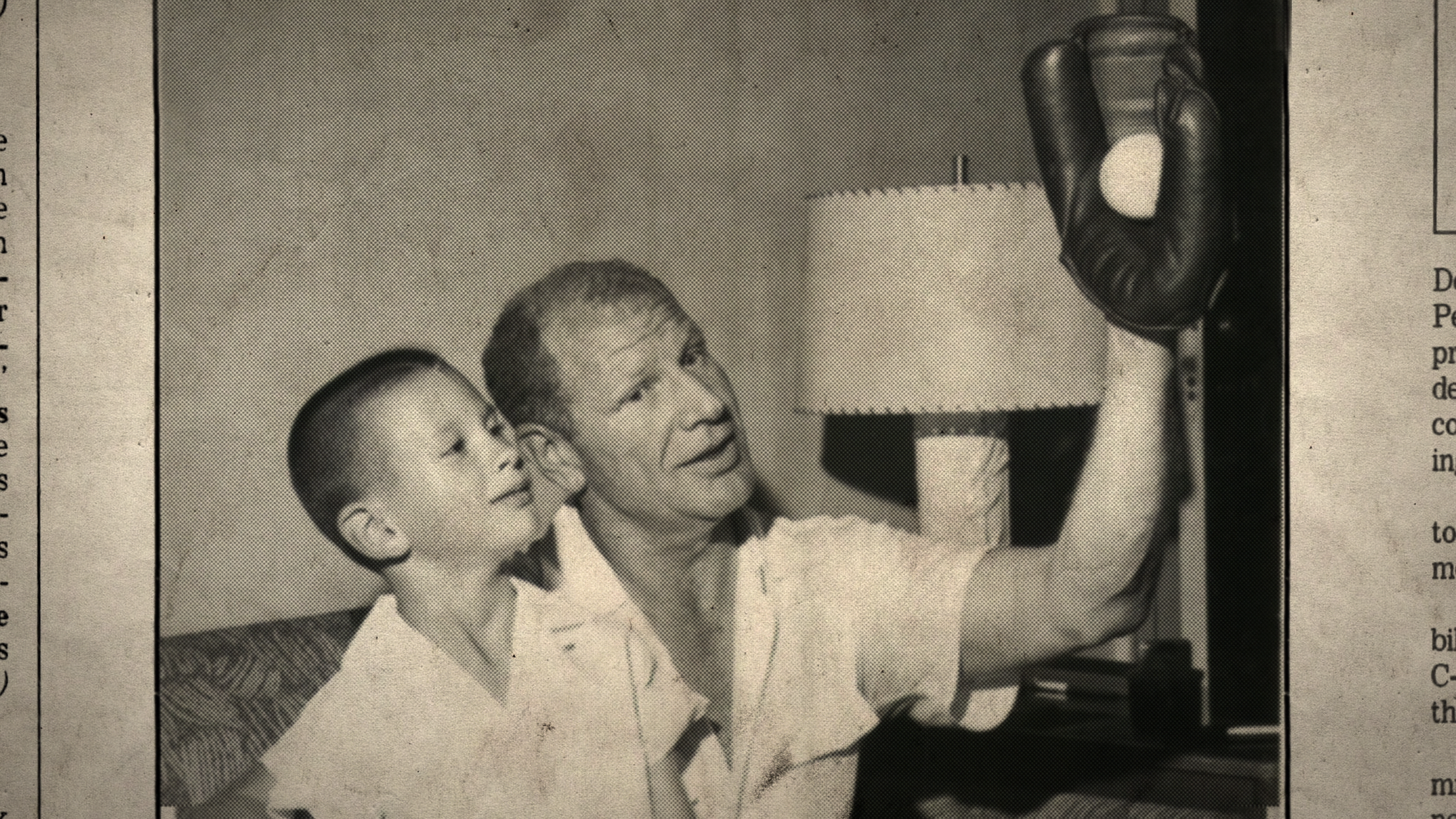
July 2, 1951: Bill becomes majority owner of the St. Louis Browns, buying 75 percent of the controlling shares of the team from Bill and Charlie DeWitt for $1.5 million.
Feb. 9, 1951: Veeck brings back Satchel Paige, who had been out of the Majors since '49. He'll pitch three seasons with the Browns, going 18-23 with a 3.57 ERA, and be selected to two All-Star Games. He's the first Black pitcher to be named an AL All-Star.
Aug. 19, 1951: Standing just 3-foot-7, Eddie Gaedel makes his debut as the shortest player in Major League history. Wearing the number 1/8, Gaedel draws a walk in his lone plate appearance. After the game, Gaedel's contract was voided by MLB, giving him a career OBP of 1.000.
“The austere American League, celebrating its fiftieth anniversary this year, will reach the ripe old age of 100 before anyone other than Phineas T. Veeck, the Barnum of baseball, tops the colorful substitute for winning ball the sport-shirted showman offered yesterday at Sportsman’s Park,” sportswriter Bob Broeg wrote.
Aug. 24, 1951: Just five days later, Veeck holds “Grandstand Manager's Day,” allowing the 1,115 fans sitting behind the dugout to vote on in-game strategy. Given large "yes" and "no" placards, the fans voted on when to steal, move the infield and even set the starting lineup.
The plan worked: The Browns lose 102 games this season but win on this night, defeating the Philadelphia A's, 5-3.
1953: Following the 1953 season, another 100-loss campaign that saw the Browns finish in the bottom of the league's attendance, Veeck sells the Browns. They move to Baltimore and become the Orioles in 1954.
1959: Veeck, along with Hall of Famer Hank Greenberg, buys the White Sox. Chicago wins its first pennant in 40 years.
1960: Veeck introduces the famed “exploding scoreboard," which is still an enduring symbol the White Sox use to this day.
Veeck actually got the idea for it after watching Jimmy Cagney in the film "The Time of Your Life."
"This character in the film was always playing pinball machines," Veeck told the Chicago Tribune in April 1960. "Toward the finish, he finally hit the jackpot and there was the darndest racket and flashing of lights you ever heard or saw."
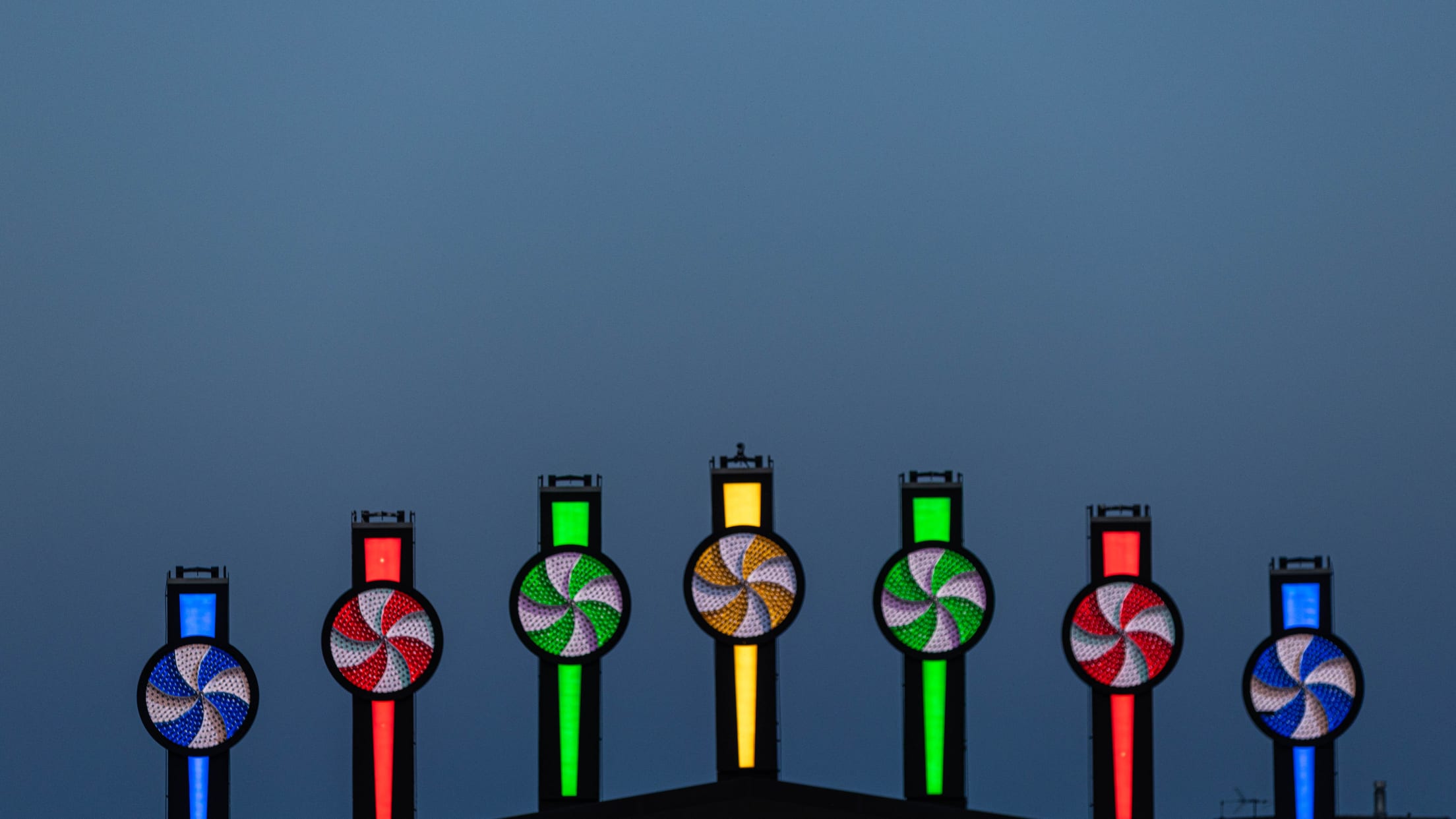
1961: In poor health, Veeck sells his stake in the White Sox for $2.5 million. He finds occasional work as a television commentator.
1962: Veeck’s autobiography, “Veeck as in Wreck," co-written with Ed Linn, is released. He'll later write two more books: "30 Tons a Day," covering his time managing Boston's Suffolk Downs racetrack, and "The Hustler's Handbook," about how Veeck navigated the world of modern baseball.
Dec. 16, 1975: Never one to sit out of baseball for long, Veeck purchases 80 percent control of the White Sox from John Allyn. Within two years, he takes the team from 11th in attendance to fifth.
During the Winter Meetings, Veeck and general manager Roland Hemond make four public trades in the lobby of a hotel. Ever the pitchman, Veeck negotiates the deals near a sign that reads, "Open for business."
1976: Mike Veeck takes a job selling season tickets for the White Sox. Before that, he toured the country with his band, The Chattanooga Glass Company.
Aug. 8, 1976: The White Sox become the first -- and still only -- Major League team to wear shorts when they take on the Kansas City Royals. (Though the Minor Leagues beat Veeck to this by about 25 years.) They wore the shorts two more times, on Aug. 21 and 22, but then that was it: Ballplayer complaints about sliding and a less-than-enthused fanbase spelled the end of the short pants.
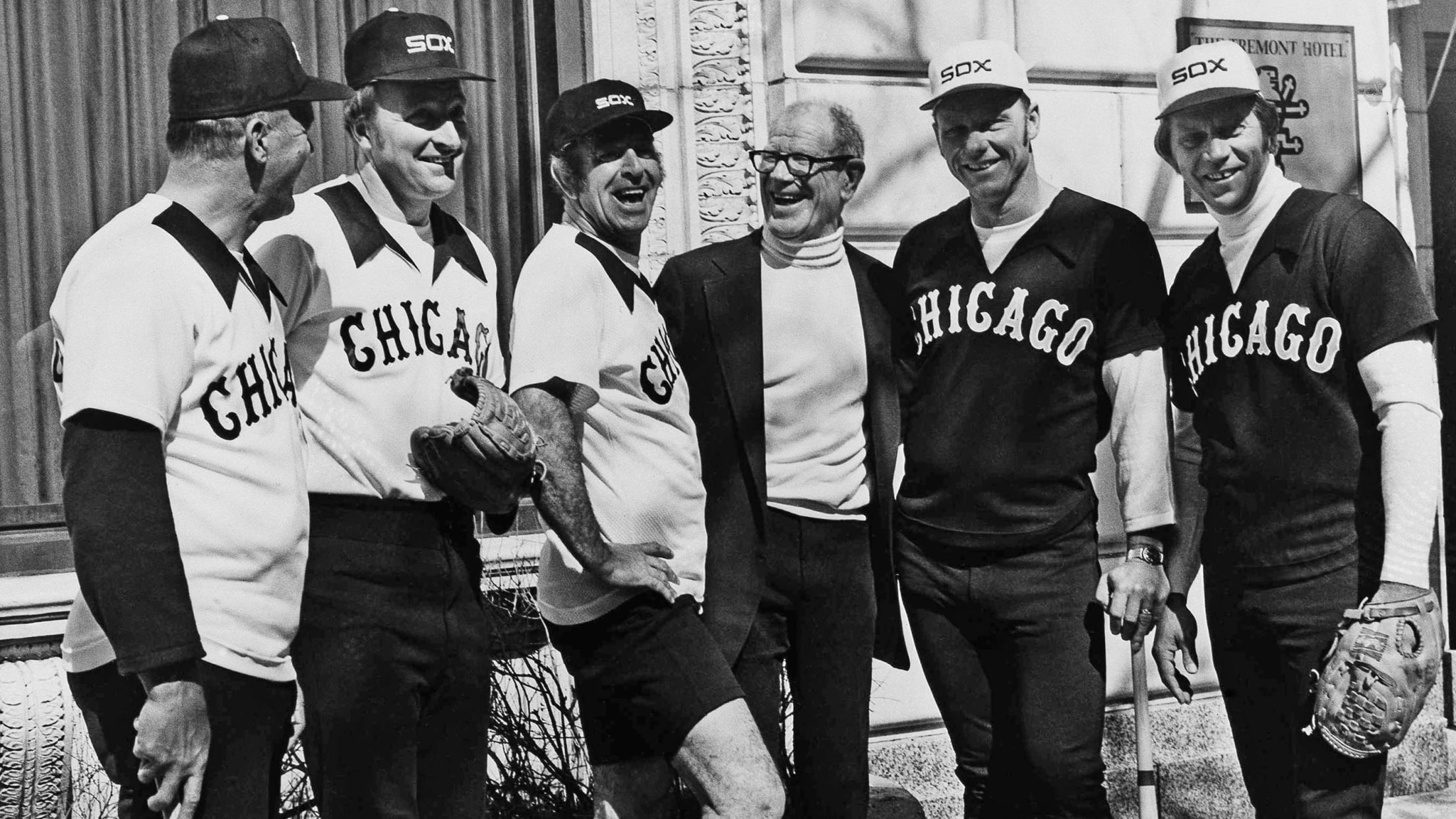
Sept. 11, 1976: Veeck activates White Sox coach and beloved former ballplayer Minnie Miñoso and gives the then-52-year-old eight at-bats across three games. Miñoso collects one hit and strikes out twice.
“He’s in remarkable condition,” Veeck told reporters before Miñoso took the field. “If he doesn’t get a hit, he’ll get hit by a pitch.”
1977: Bill Veeck asks Harry Caray to sing, "Take Me Out to the Ballgame" during the seventh-inning stretch. Caray was originally opposed to the idea, so Veeck told the bespectacled broadcaster that he already had a tape of Caray singing it and he would use that instead.
"Harry was very vain," Mike Veeck told ESPN in 2008. "He really didn't understand the concept that the people in the extreme bowels of the stadium, the people in the left-field upper deck, because he was one of their own, how he would bring them together. He didn't quite get that if he could sing it, everybody could sing it."
Fortunately, Caray gave it a shot: The broadcaster ended up taking it with him when he left for the Cubs, and it remains a Wrigley tradition to this day.
April 10, 1979: After the Sox lose to the Blue Jays, 10-2, on Opening Day, Veeck makes the promotion of all promotions: He offers fans free admission to the next game.
Unfortunately, that game ends much the way the first one did: The White Sox give up six runs in the top of the eighth and lose, 9-7.
July 12, 1979: This is it, perhaps the most infamous ballpark promotion of all: Disco Demolition Night. Between games of a twi-night doubleheader with the Tigers, a crate of disco records is set to be blown up on the field by Chicago disk jockey Steve Dahl. Unfortunately, the event quickly gets out of hand when fans storm the field, forcing the White Sox to forfeit the second game.
Though many don’t know it, one week earlier, the White Sox held a pro-Disco night, too.
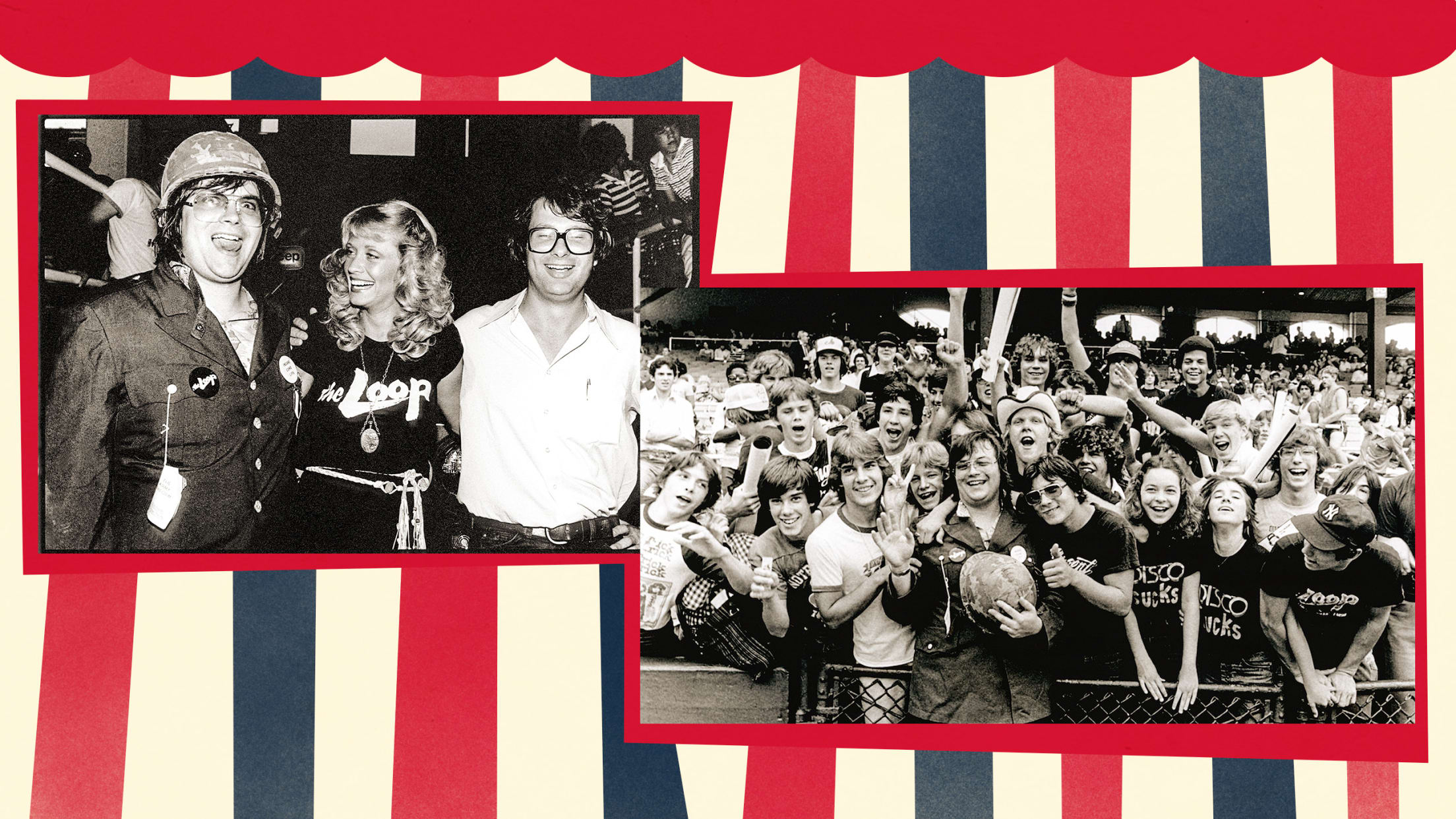
Oct. 4-5, 1980: Veeck again gets Minnie Miñoso into a game, stretching his big league career to five decades. He appears in two games as a pinch-hitter at the age of 56, going 0-for-2.
1980: Mike Veeck leaves the White Sox at the end of the season. This will begin a nearly decade-long break from the game for Mike.
Jan. 29, 1981: Claiming to be unable to compete financially with the game's other owners, Bill Veeck sells the White Sox to Jerry Reinsdorf. Though this would end Veeck's time as a big league owner, it wouldn't keep him away from the ballpark: The elder Veeck, having grown up attending Cubs games, can be seen hanging out at Wrigley as a fan.
Jan. 2, 1986: Bill Veeck passes away at the age of 71 from cancer.
April 11, 1986: Mike's son, William "Night Train" Veeck, is born in Pompano Beach, Fla.
May 1986: Night Train Veeck likely starts working in Minor League Baseball. (A family joke: Veeck legally started working in baseball in 2006 for the Charleston RiverDogs.)
1989: Actor Bill Murray, lawyer Marv Goldklang and artist Van Schley buy the Minor League Miami Miracle. Sitting next to former White Sox GM and then-Orioles GM Roland Hemond, Schley mentions the purchase they made.
"Well, if you're dumb enough to buy the Miracle, then you're dumb enough to hire [Mike] Veeck," Hemond supposedly said. Sure enough, the team does hire Veeck, bringing him back to baseball.

July 21, 1991: Bill Veeck is inducted into the Hall of Fame. The last sentence on his plaque reads, "Champion of the little guy."
Dec. 12, 1991: Mike's daughter Rebecca is born. He and his wife, Libby, skip putting her in daycare, letting her come to the Saints park most days as a young child.
1992: Murray, Goldklang and Veeck purchase the independent St. Paul Saints, ushering in a new era of independent baseball success.
1993: This marks the first appearance of the team's pig mascot, the St. Paul Swine. Since then, there’s been a new pig christened for the Saints every year. The original was just known as "The Saint."
June 30, 1993: Miñoso is expected to make another appearance for the White Sox, but commissioner Fay Vincent intervenes before White Sox players also come out against the move. Undaunted, Mike Veeck signs the star for the St. Paul Saints. Facing rookie Yoshi Seo, Miñoso grounds a ball back up the middle ... that is unfortunately snagged and thrown to first for the out.
“I don't think of it as a promotion, I think that's an appearance of talent,” Veeck told MLB.com. “That's how I view it -- it’s an opportunity for these younger fans, and for fans who enjoy them to see this remarkable human who all these years later could still swing the bat, who still hustled out to first base.”
1994: Now also a co-owner of the Class A Charleston RiverDogs in South Carolina, Veeck helps initiate the construction of "The Joe" -- a new stadium for the team. It will be completed in 1996.
May 3, 1996: After struggling with addiction, famed slugger Darryl Strawberry finds himself without a big league job after 13 seasons with the Mets, Dodgers, Giants and Yankees. That's no issue for Veeck, who happily offers the outfielder a second chance. Strawberry plays 29 games with the Saints, hitting 18 home runs in that time. It's enough to catch the eye of the Yankees, who re-sign him on July 4.
May 31, 1997: Ila Borders makes her debut for the Saints, becoming the first woman in the post-integration era to play professional baseball. She makes seven appearances for the team and continues to play independent baseball through 2000.
1998: With a brand new franchise and the desire to bring in fans, Tampa Bay Devil Rays owner Vince Naimoli hires Veeck to be the team's senior vice president of marketing and sales. Veeck stays on the job for nine months.
February 2001: The Marlins hire Veeck to be a consultant. Marlins executive vice president Julio Rebull Jr. announces, “Whenever you have the opportunity to work with someone the caliber of Mike Veeck, it’s certainly advantageous. His experience and stature in baseball brings a great level of excitement and energy to our organization.″
May 2002: Following Dave Dombrowski from Miami to Detroit, Veeck becomes the Tigers' senior vice president of marketing and communications. He stays for three seasons.
July 2002: Veeck's Charleston RiverDogs host “Nobody Night” -- a promotion where no fans are allowed in the stadium. After the bottom of the fifth inning, when the official attendance count was read as "Zero," fans were allowed into the ballpark.
July 16, 2003: Veeck gets Miñoso into uniform one more time for the Saints, making him the only pro baseball player to play in seven different decades. Wearing a New York Cubans uniform, Miñoso draws a walk against Tim Byrdak in his first plate appearance.
“Miñoso was no fool, and he understood what he represented -- not just to baseball fans who had seen him play but to Cubanos who came up,” Veeck said. “This was a remarkable feat. Forget baseball, this comes down to being sharp enough at his age to compete with kids a third his age. And so he was thrilled.”
May 8, 2005: The Saints play a Mother’s Day game at 5:35 a.m., with 500 fans tailgating overnight in the parking lot. The Saints set a record for the earliest game start time.
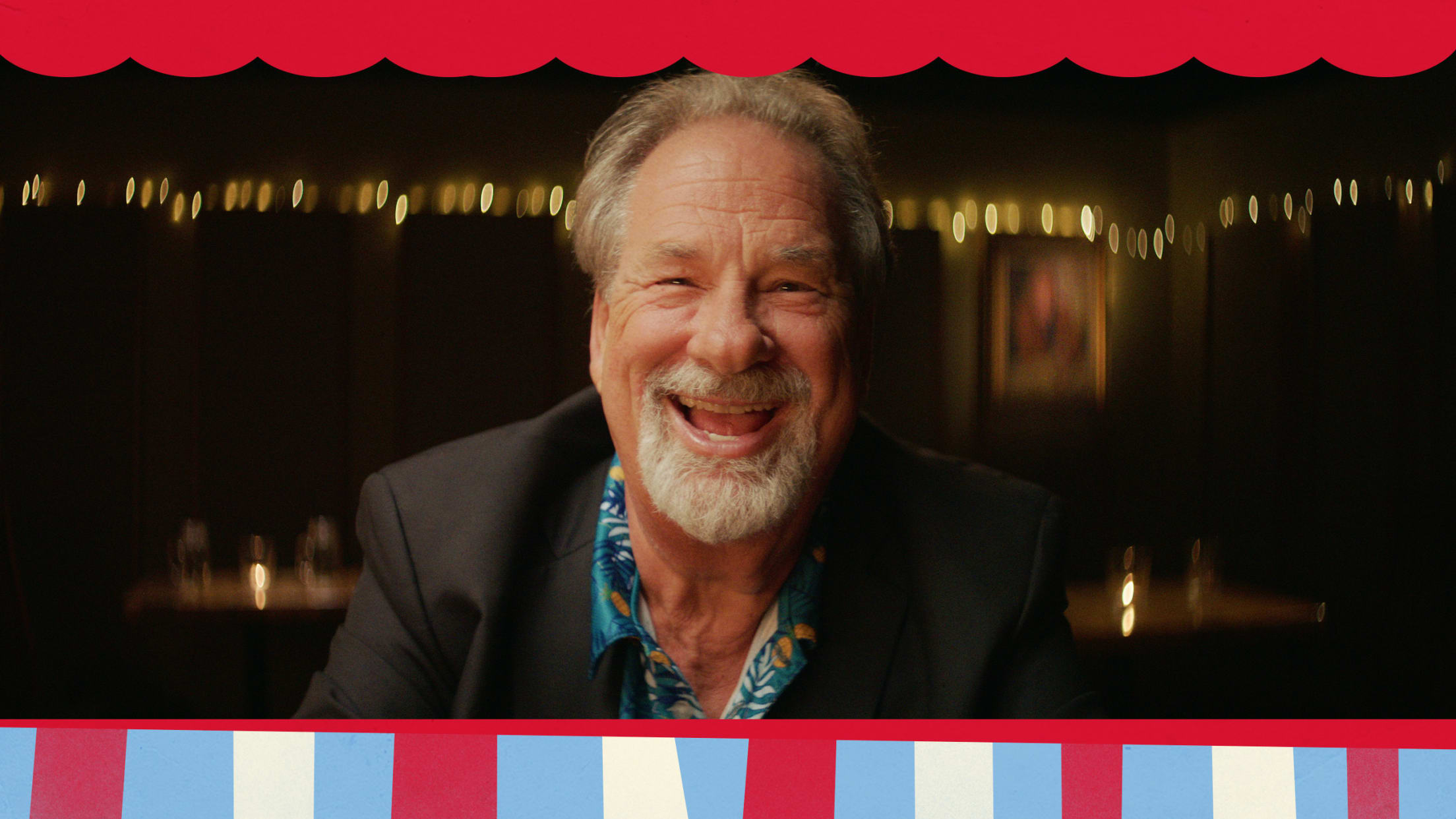
2010: Night Train Veeck begins working for the Chicago White Sox, making him the third generation of Veecks to work for the team.
June 18, 2012: The Charleston RiverDogs host the South Atlantic League Home Run Derby on the USS Yorktown aircraft carrier.
May 11, 2013: The Saints play a game without umpires. Instead, there's a judge who calls balls and strikes from behind the pitcher. Calls at first and third base are made by a "jury" of 12 Little League players.
July 21, 2015: The world's largest pillow fight is held after the second inning of the Saints game, with 6,261 participants taking part.
2015: CHS Field in the Lowerton area of St. Paul opens as the Saints' new home. The $63 million facility stands as a testament to the work and success of the ballclub.
2016: Showing a commitment to all bat-and-ball sports, Night Train goes to Australia to work for the Cricket League.
Aug. 14, 2018: To celebrate the 40th anniversary of the film "Animal House," the Saints hold a food fight. Roughly 8,000 fans don rain ponchos to hurl mashed potatoes, hot dogs, popcorn and whatever other foodstuff they can get their hands on:
Sept. 30 2019: Rebecca Veeck passes away from Batten Disease, a rare neurological disorder that afflicted Rebecca for most of her life.
Early 2023: Veeck sells the St. Paul Saints. After 28 seasons as an independent club, they became the Twins' Triple-A affiliate before the 2021 season.
Sept. 19, 2023: Mike Veeck's documentary "The Saint of Second Chances" debuts on Netflix.